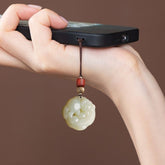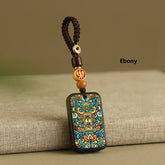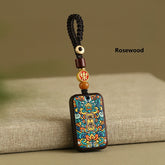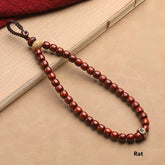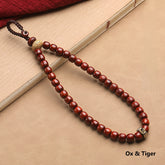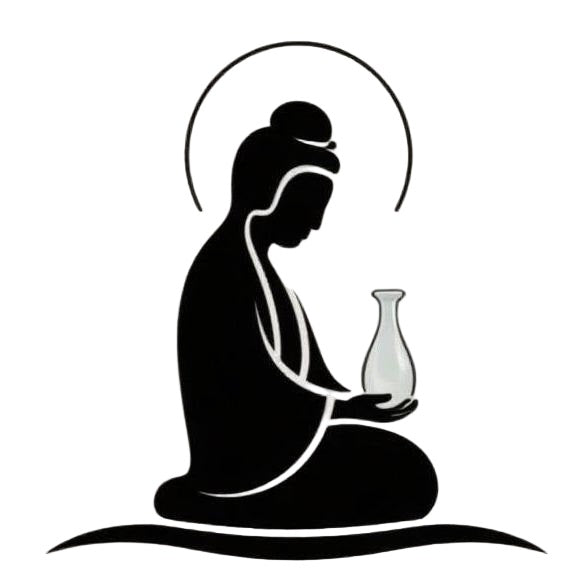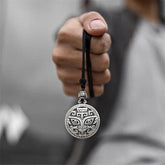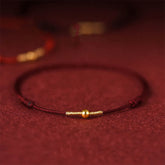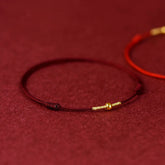Crane Symbolism: Longevity, Harmony & Feng Shui Meanings
what does korean crane symbolism
The elegant crane symbolism permeates Asian cultures as a powerful representation of longevity, wisdom, and spiritual elevation. Known as he in Chinese, the crane is considered one of the most auspicious creatures in Feng Shui practices and spiritual traditions. Its graceful posture, snow-white plumage, and legendary lifespan have made it a timeless symbol of noble character and divine connection. Throughout history, the Chinese crane has appeared in imperial artwork, Taoist mythology, and ceremonial rituals, consistently embodying themes of eternal life and harmonious balance.
Understanding the depth of crane symbolism provides valuable insights into both ancient wisdom and modern spiritual practices. This comprehensive guide explores the cultural origins, spiritual significance, and practical applications of crane imagery in Feng Shui and daily life. Whether you're drawn to the crane's association with longevity or seeking to incorporate its balanced energy into your living space, you'll discover how this majestic bird can become a source of inspiration and transformation.
The Cultural Origins of Crane Symbolism
Chinese Mythology and Imperial Associations
In Chinese tradition, the crane symbolism is deeply intertwined with concepts of immortality and high status. Ancient texts like the Classic of Mountains and Seas describe cranes as companions to immortals, often depicting them carrying divine beings on their backs between celestial realms. During the Ming and Qing dynasties, crane embroidery on official robes designated civil officials of the first rank, symbolizing their wisdom and integrity.
The Chinese crane appears frequently in poetry and art as a metaphor for scholars and sages who maintain moral purity amid worldly chaos. Its ability to soar high into the heavens made it a natural bridge between earthly and spiritual dimensions in Taoist practices. According to the Shen Nong's Herbal Classic, crane feathers were sometimes used in medicinal preparations aimed at extending life, further strengthening its longevity crane associations.
Japanese and Korean Cultural Significance
In Japan, the crane (tsuru) represents happiness, fidelity, and good fortune. The ancient practice of folding 1,000 origami cranes for wish fulfillment remains popular today, particularly for healing ceremonies. Similarly, Korean myths portray cranes as messengers between humans and deities, often appearing in wedding symbolism to signify marital harmony and commitment.
Spiritual Meanings of the Crane
Longevity and Immortality
The most universal aspect of crane symbolism centers on long life and vitality. Chinese legends suggest cranes live for thousands of years, feeding on cosmic energy rather than earthly food. This longevity crane imagery makes it an ideal symbol for those seeking health improvements or celebrating milestone birthdays.
In spiritual practices, meditating on crane imagery can help:
-
Cultivate appreciation for life's preciousness
-
Connect with cycles of renewal and regeneration
-
Develop a mindset focused on sustainable wellbeing
Wisdom and Spiritual Enlightenment
The crane's calm demeanor and observant nature symbolize deep wisdom and contemplative insight. In Buddhist traditions, the bird sometimes represents mindfulness and single-pointed concentration. Its habit of standing perfectly still on one leg serves as a metaphor for meditative stability and inner balance.
Many spiritual practitioners use crane symbolism to enhance their meditation practice, visualizing the bird's graceful form to quiet the mind and access higher states of awareness.
Crane Symbolism in Feng Shui Practices
Activating Longevity and Health Energy
In crane Feng Shui applications, the bird is primarily used to enhance health and longevity energies within a space. To maximize these benefits:
-
Place Crane Imagery in the Health Area: Position crane statues or artwork in the East sector of your home according to the Bagua map.
-
Combine with Other Longevity Symbols: Pair cranes with peaches, bamboo, or pine trees to amplify life-extending energy.
-
Use in Bedrooms and Meditation Spaces: Incorporate crane elements in rooms dedicated to rest and spiritual practice.
The crane Feng Shui principles emphasize its role in creating a harmonious environment that supports physical vitality and emotional balance.
Enhancing Relationship Harmony
When depicted in pairs, cranes symbolize marital bliss and faithful partnership. This makes them excellent additions to the relationship area (Southwest) of your home or bedroom. The birds' monogamous nature in the wild reinforces their association with commitment and mutual support.
For couples seeking to strengthen their bond, displaying two cranes together can serve as a powerful reminder of shared values and enduring connection.
Practical Applications in Modern Life
Incorporating Crane Symbolism in Home Decor
Integrating crane symbolism into your living space can be both aesthetically pleasing and energetically beneficial:
-
Wall Art: Choose paintings or prints featuring cranes in natural settings to promote tranquility.
-
Sculptures: Place crane figurines made of jade, porcelain, or bronze in key energy areas.
-
Textiles: Incorporate crane patterns on cushions, curtains, or tapestries to subtly infuse crane energy.
These decorative elements not only enhance your interior design but also continuously reinforce the positive crane spiritual meaning throughout your home.
Crane-Inspired Jewelry and Personal Items
Wearing crane motifs as jewelry or carrying them as talismans allows you to keep the bird's protective energy with you throughout the day. Popular options include:
-
Crane pendants in silver or gold
-
Jade crane carvings
-
Embroidered crane patterns on clothing or accessories
These personal items serve as constant reminders of the crane's virtues—grace, wisdom, and resilience.
The Crane in Contemporary Spirituality
Meditation and Visualization Practices
Modern spiritual practitioners have adapted crane symbolism into various mindfulness techniques:
-
Crane Standing Meditation: Emulate the crane's balanced one-legged stance to improve physical stability and mental focus.
-
Breathing Visualization: Imagine breathing with the slow, deliberate rhythm of a crane's movements to calm the nervous system.
-
Journey Work: Visualize flying with cranes during meditation to gain perspective on life challenges.
These practices help integrate the crane's serene energy into daily routines, promoting both spiritual and psychological wellbeing.
Environmental Connections and Conservation
As many crane species face habitat threats, their symbolism has expanded to include environmental awareness and ecological balance. Supporting crane conservation efforts represents a practical way to honor this sacred bird while contributing to planetary health. This modern interpretation adds depth to traditional crane symbolism, connecting spiritual practice with actionable environmental stewardship.
Conclusion: Embracing Crane Wisdom
The multifaceted crane symbolism offers enduring lessons about living with grace, wisdom, and harmony. From its ancient associations with immortality to its modern Feng Shui applications, the crane continues to inspire those seeking deeper spiritual connection and balanced living. By understanding its rich cultural heritage and practical uses, you can effectively incorporate crane energy into your spiritual practice and living environment.
At Fengshui&Buddha, we honor this majestic bird through carefully selected crane-inspired items designed to help you harness its positive attributes. From talismans to home decor, each piece serves as a beautiful reminder of the crane's uplifting spiritual meaning and its power to attract longevity, harmony, and wisdom into your life.


